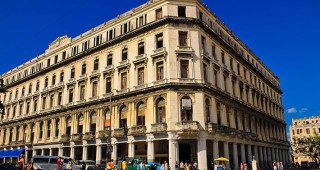
The first and main exponent of art deco in the city belonged to Emilio Bacardí and was the home to his famous rum company. After winning the contest held by Bacardí, architects E. Rodríguez, R. Fernández and J. Menéndez designed the edifice so that it would meet the requirements of the company. Construction works were undertaken by a German company and completed in only 300 days in 1930, despite the characteristics of the terrain, which called for the use of 500 hard-wood piles and high-quality reinforced concrete. At the time, it was Cuba’s tallest building.
Influenced by Catalan modernism, its ziggurat-like design uses tiles as decoration, which gives the building a unique look. It has 12 floors, of which the bottom five were used as office space for rent. Each of these floors was divided into 34 units, in addition to a number of meeting halls and a bar. The lobby is decorated from floor to ceiling in modern style with marble of different colors, imported from several European countries, while the façade is covered with red Bavaria granite. According to suppliers, the decoration of the building includes granite and marble from all over Europe. On the top floor, the exceptional brick tower, topped by the company’s bat emblem, offers a magnificent view of Old Havana.
This National Architecture Award-winning building was renovated in 2001 and currently houses offices from a number of Cuban and international companies. For the best view of this edifice, go to the rooftop terrace of Hotel Plaza, across the street.













 Baroque
Baroque








